Delphi (; Greek: Δελφοί [ðelˈfi]), in legend previously called Pytho (Πυθώ), was an ancient sacred precinct and the seat of Pythia, the major oracle who was consulted about important decisions throughout the ancient classical world. The ancient Greeks considered the centre of the world to be in Delphi, marked by the stone monument known as the Omphalos of Delphi (navel).
According to the Suda, Delphi took its name from the Delphyne, the she-serpent (drakaina) who lived there and was killed by the god Apollo (in other accounts the serpent was the male serpent (drakon) Python).
The sacred precinct occupies a delineated region on the south-western slope of Mount Parnassus.
It is now an extensive archaeological site, and since 1938 a part of Parnassos National Park. The precinct is reco...Read more
Delphi (; Greek: Δελφοί [ðelˈfi]), in legend previously called Pytho (Πυθώ), was an ancient sacred precinct and the seat of Pythia, the major oracle who was consulted about important decisions throughout the ancient classical world. The ancient Greeks considered the centre of the world to be in Delphi, marked by the stone monument known as the Omphalos of Delphi (navel).
According to the Suda, Delphi took its name from the Delphyne, the she-serpent (drakaina) who lived there and was killed by the god Apollo (in other accounts the serpent was the male serpent (drakon) Python).
The sacred precinct occupies a delineated region on the south-western slope of Mount Parnassus.
It is now an extensive archaeological site, and since 1938 a part of Parnassos National Park. The precinct is recognized by UNESCO as a World Heritage Site in having had a great influence in the ancient world, as evidenced by the various monuments built there by most of the important ancient Greek city-states, demonstrating their fundamental Hellenic unity.
Adjacent to the sacred precinct is a small modern town of the same name.
Occupation of the site at Delphi can be traced back to the Neolithic period with extensive occupation and use beginning in the Mycenaean period (1600–1100 BC). In Mycenaean times Krissa was a major Greek land and sea power, perhaps one of the first in Greece, if the Early Helladic date of Kirra is to be believed.[1] The ancient sources indicate that the previous name of the Gulf of Corinth was the "Krisaean Gulf".[2] Like Krisa, Corinth was a Dorian state, and Gulf of Corinth was a Dorian lake, so to speak, especially since the migration of Dorians into the Peloponnesus starting about 1000 BC. Krisa's power was broken finally by the recovered Aeolic and Attic-Ionic speaking states of southern Greece over the issue of access to Delphi. Control of it was assumed by the Amphictyonic League, an organization of states with an interest in Delphi, in the early Classical period. Krisa was destroyed for its arrogance. The gulf was given Corinth's name. Corinth by then was similar to the Ionic states: ornate and innovative, not resembling the spartan style of the Doric.
Ancient DelphiEarlier myths[3][4] include traditions that Pythia, or the Delphic oracle, already was the site of an important oracle in the pre-classical Greek world (as early as 1400 BC) and, rededicated from about 800 BC, when it served as the major site during classical times for the worship of the god Apollo.
 Speculative illustration of ancient Delphi by French architect Albert Tournaire
Speculative illustration of ancient Delphi by French architect Albert TournaireDelphi was since ancient times a place of worship for Gaia, the mother goddess connected with fertility. The town started to gain pan-Hellenic relevance as both a shrine and an oracle in the seventh century BC. Initially under the control of Phocaean settlers based in nearby Kirra (currently Itea), Delphi was reclaimed by the Athenians during the First Sacred War (597–585 BC). The conflict resulted in the consolidation of the Amphictyonic League, which had both a military and a religious function revolving around the protection of the Temple of Apollo. This shrine was destroyed by fire in 548 BC and then fell under the control of the Alcmaeonids who were banned from Athens. In 449–448 BC, the Second Sacred War (fought in the wider context of the First Peloponnesian War between the Peloponnesian League led by Sparta and the Delian-Attic League led by Athens) resulted in the Phocians gaining control of Delphi and the management of the Pythian Games.
In 356 BC, the Phocians under Philomelos captured and sacked Delphi, leading to the Third Sacred War (356–346 BC), which ended with the defeat of the former and the rise of Macedon under the reign of Philip II. This led to the Fourth Sacred War (339 BC), which culminated in the Battle of Chaeronea (338 BC) and the establishment of Macedonian rule over Greece.
In Delphi, Macedonian rule was superseded by the Aetolians in 279 BC, when a Gallic invasion was repelled, and by the Romans in 191 BC. The site was sacked by Lucius Cornelius Sulla in 86 BC, during the Mithridatic Wars, and by Nero in 66 AD. Although subsequent Roman emperors of the Flavian dynasty contributed toward to the restoration of the site, it gradually lost importance.[citation needed]
The anti-pagan legislation of the late Roman Imperial era deprived ancient sanctuaries of their assets.[citation needed] The emperor Julian attempted to reverse this religious climate, yet his "pagan revival" was particularly short-lived. When the doctor Oreibasius visited the oracle of Delphi, in order to question the fate of paganism, he received a pessimistic answer:[citation needed]
Tell the king that the flute has fallen to the ground. Phoebus does not have a home any more, neither an oracular laurel, nor a speaking fountain, because the talking water has dried out
It was shut down during the persecution of pagans in the late Roman Empire by Theodosius I in 381 AD.[5]
Amphictyonic CouncilThe Amphictyonic Council was a council of representatives from six Greek tribes who controlled Delphi and also the quadrennial Pythian Games. They met biannually and came from Thessaly and central Greece. Over time, the town of Delphi gained more control of itself and the council lost much of its influence.
The sacred precinct in the Iron Age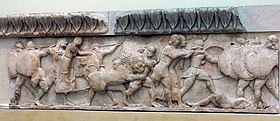 Section of the frieze from the Treasury of the Siphnians, now in the museum
Section of the frieze from the Treasury of the Siphnians, now in the museumExcavation at Delphi, which was a post-Mycenaean settlement of the late ninth century, has uncovered artifacts increasing steadily in volume beginning with the last quarter of the eighth century BC. Pottery and bronze as well as tripod dedications continue in a steady stream, in contrast to Olympia. Neither the range of objects nor the presence of prestigious dedications proves that Delphi was a focus of attention for a wide range of worshippers, but the large quantity of valuable goods, found in no other mainland sanctuary, encourages that view.
Apollo's sacred precinct in Delphi was a Panhellenic Sanctuary, where every four years, starting in 586 BC[6] athletes from all over the Greek world competed in the Pythian Games, one of the four Panhellenic Games, precursors of the Modern Olympics. The victors at Delphi were presented with a laurel crown (stephanos) that was ceremonially cut from a tree by a boy who re-enacted the slaying of the Python.[6] (These competitions are also called stephantic games, after the crown.) Delphi was set apart from the other games sites because it hosted the mousikos agon, musical competitions.[7]
These Pythian Games rank second among the four stephantic games chronologically and in importance.[6] These games, however, were different from the games at Olympia in that they were not of such vast importance to the city of Delphi as the games at Olympia were to the area surrounding Olympia. Delphi would have been a renowned city regardless of whether it hosted these games; it had other attractions that led to it being labeled the "omphalos" (navel) of the earth, in other words, the centre of the world.[6][8]
 Cyriacus of Ancona, first Westerner to describe the remains in Delphi in 1436
Cyriacus of Ancona, first Westerner to describe the remains in Delphi in 1436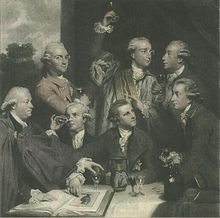 The Society of Dilettanti organized a study expedition to Delphi in 1766
The Society of Dilettanti organized a study expedition to Delphi in 1766In the inner hestia (hearth) of the Temple of Apollo, an eternal flame burned. After the battle of Plataea, the Greek cities extinguished their fires and brought new fire from the hearth of Greece, at Delphi; in the foundation stories of several Greek colonies, the founding colonists were first dedicated at Delphi.[9]
Abandonment and rediscoveryThe Ottomans finalized their domination over Phocis and Delphi in about 1410 AD. Delphi itself remained almost uninhabited for centuries. It seems that one of the first buildings of the early modern era was the monastery of the Dormition of Mary or of Panagia (the Mother of God) built above the ancient gymnasium at Delphi. It must have been toward the end of the fifteenth or in the sixteenth century that a settlement started forming there, which eventually ended up forming the village of Kastri.
Ottoman Delphi gradually began to be investigated. The first Westerner to describe the remains in Delphi was Cyriacus of Ancona, a fifteenth-century merchant turned diplomat and antiquarian, considered the founding father of modern classical archeology.[10] He visited Delphi in March 1436 and remained there for six days. He recorded all the visible archaeological remains based on Pausanias for identification. He described the stadium and the theatre at that date as well as some freestanding pieces of sculpture. He also recorded several inscriptions, most of which are now lost. His identifications, however, were not always correct: for example he described a round building he saw as the temple of Apollo while this was simply the base of the Argives' ex-voto. A severe earthquake in 1500 caused much damage.
In 1766, an English expedition funded by the Society of Dilettanti included the Oxford epigraphist Richard Chandler, the architect Nicholas Revett, and the painter William Pars. Their studies were published in 1769 under the title Ionian Antiquities,[11] followed by a collection of inscriptions,[12] and two travel books, one about Asia Minor (1775),[13] and one about Greece (1776).[14] Apart from the antiquities, they also related some vivid descriptions of daily life in Kastri, such as the crude behaviour of the Muslim Albanians who guarded the mountain passes.[citation needed]
In 1805 Edward Dodwell visited Delphi, accompanied by the painter Simone Pomardi.[15] Lord Byron visited in 1809, accompanied by his friend John Cam Hobhouse:
Yet there I've wandered by the vaulted rill
Yes! Sighed o'er Delphi's long deserted shrine,
where, save that feeble fountain, all is still.
He carved his name on the same column in the gymnasium as Lord Aberdeen, later Prime Minister, who had visited a few years before. Proper excavation did not start until the late nineteenth century (see "Excavations" section) after the village had moved.


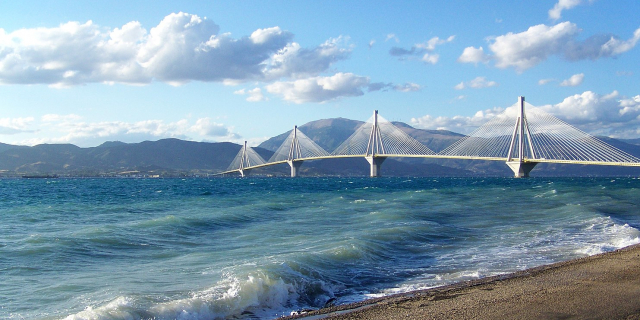














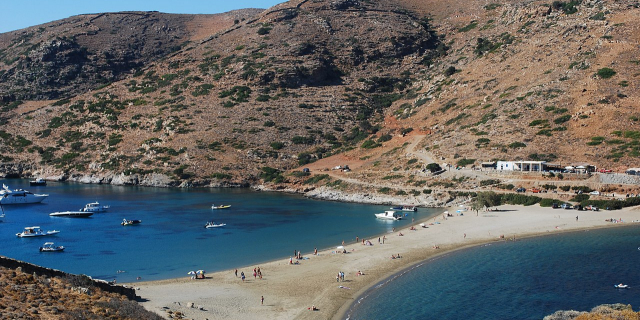


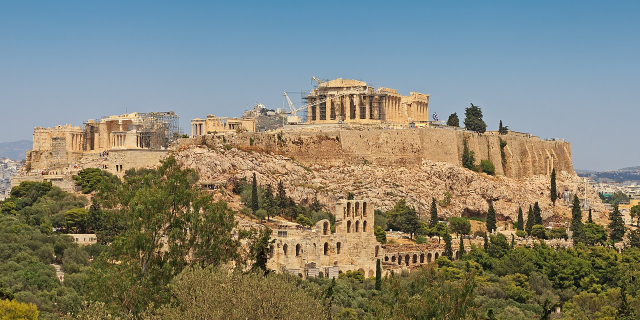









Add new comment